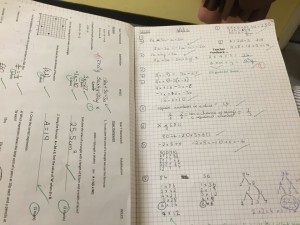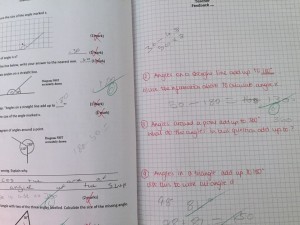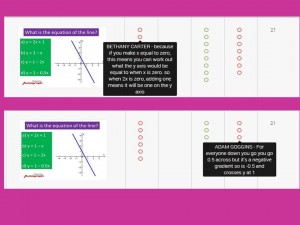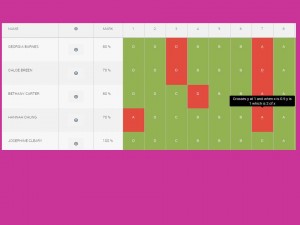You can view all the posts in the epic “Writing a Maths Scheme of Work” series on this page. It’s kind of like Game of Thrones, only with slightly less nudity and dragons.
It has been a while since I updated this series of blog posts about our department’s quest to write a new scheme of work. But fear not, I am back with new series of posts to fill in some gaps and update you how the year has gone. And I am also pleased to say that I will be able to share with you some version of the completed scheme of work in a couple of weeks’ time.
So, today we turn our attention to homeworks. And for those of you who have been following this series will know that we have two types of homeworks running for all year groups:
1. Fortnightly Written Homeworks
These are set to classes every two weeks (there is a clue to that in their name…). They consist of 30 marks, 10 of which are for Revision (i.e. questions from topics taught earlier in the year or in previous years), and 20 marks are based on the current topics being taught. These scores are then recorded centrally on a spreadsheet to make comparison and appropriate interventions as easy as possible.
Wherever possible, the staff writing these have tried to use either original questions, or questions the students have never seen before. We also have 4 levels of each homework (with overlaps), depending on what set the student is in. But crucially, there is flexibility that if a student is performing particularly well on a topic, there is nothing stopping them taking on, say, the Wiles version of a homework, even though their classmates are on Newton.
To make these homeworks as effective as possible, we print them out on A4 sheets and they are stuck on the left-hand pages of students’ exercise books (we have the big blue A4 exercise books for all year groups this year, and I thoroughly recommend them). Students then complete any working out on the right hand page, and write their answers in the space on the sheet. This makes marking very quick, and also leaves room on the right for teachers to correct work, give feedback and instruct any redrafting that is necessary.
We then set aside one lesson a fortnight for students to look back upon the homework after it has been marked. This is their opportunity to respond to feedback, make any corrections, and complete any extension work set by the teacher.
I have included some screen shots from students’ books below (and I promise I have not just selected the neat students – as you will see!).
I know I am biased, but these are some of the best books I have seen in 10 years of teaching. Not necessarily in terms of neatness, but in more important matters. There are no loose sheets, no squashed up working, plenty of teacher comments, and there is a clear structure that means if someone pops into a maths lesson and picks up a random book, it is obvious where the homeworks are. We have also found the workload in terms of marking manageable.
Oh, and next year we are taking this to the next level having seen how bright and colourful the English department’s books were. We have bulk ordered some pens! Homework will be marked in red, then students will do corrections in purple, and this will be remarked in green. I am not entirely sure if this is colour-blind friendly, but we are giving it a go.
I’ll be honest – the creation of these homeworks took a long, long time and a load of effort from every member of our department, and there is definitely room for improvement, but now they are done, we are set up for the next few years, with only tweaks needed.
Anyway, to give you a better picture of them, here is a set of Year 9 homeworks on Patterns and Equations:
Wiles – Patterns and Equations (top two sets)
Newton – Patterns and Equations
Gauss – Patterns and Equations
Fermat – Patterns and Equations
2. Weekly Diagnostic Questions homeworks
Each week, each year group from 7 to 11 is set a 10 question Diagnostic Question quiz. Again, we have tried to fuse together practise of the current topic being taught, alongside the need for regular practise of past topics. So, we have a balance of 3 questions on the current topic, and 7 that test prior knowledge.
If you read this blog, you will have heard me banging on (in a completely objective way, of course), about the virtues and benefits of Diagnostic Questions, so all I will say here is that our students have really benefited from reading explanations given by students all over the world. This has especially been true for the seven prior knowledge questions, where students may have different areas of weakness and different gaps in their knowledge, and they are able to resolve their own misconceptions by reading other students’ explanations. We have found teachers also benefit as they can clearly see areas of weakness across their whole group.
Here is an example of a week’s worth of Year 8 homeworks, so you can get a flavour:
So, I hope that gives you an idea of how our homeworks run. Next time, assessments!









